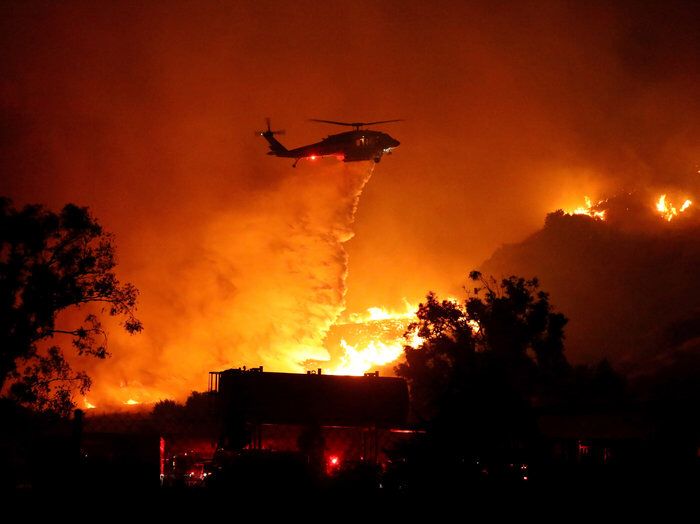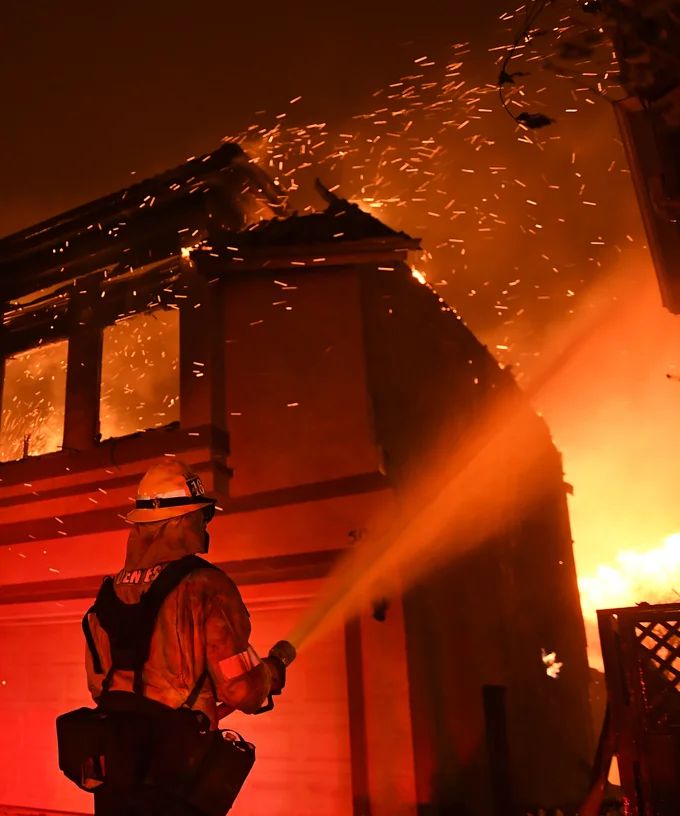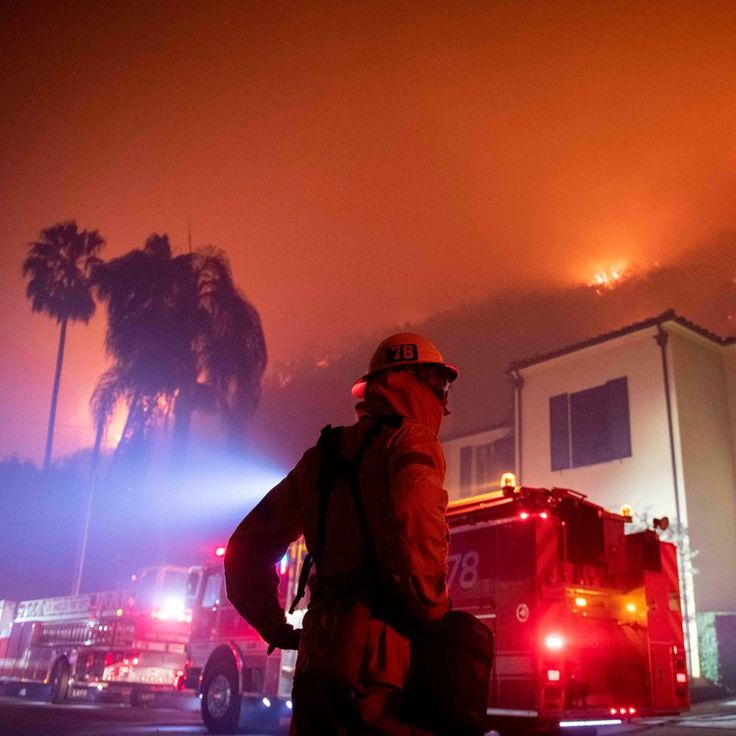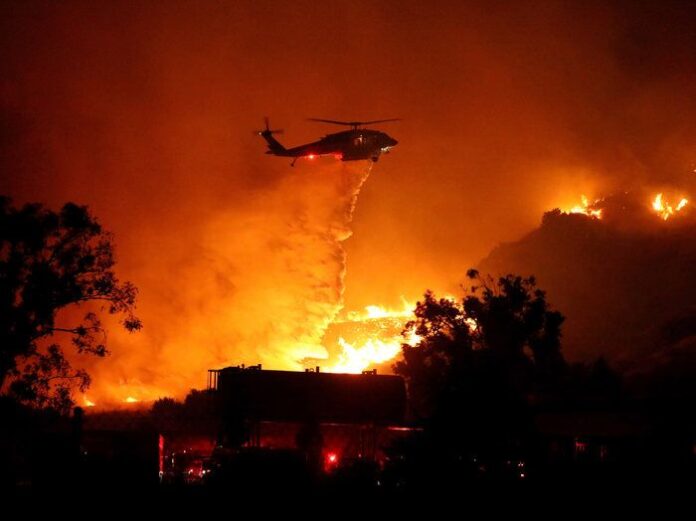The year 2025 began with a shocking event that has captured national and global attention—the fire in Los Angeles, California. The wildfire, which broke out on January 5th, had grown into one of the most destructive blazes in recent history. As of today, it continues to rage across large portion of the city and surrounding areas, threatening lives, homes, and the environment.
The Rapidly Growing Fire in Los Angeles, California

The fire in Los Angeles, California erupted unexpectedly in the early hours of the morning, fueled by dry condition, high winds, and a lack of recent rainfall. within hours, the fire spread across thousand of acres, engulfing neighborhoods, forest, and businesses. emergency services responded quickly, but the flames were too intense for immediate containment, and the fire quickly became a major disaster.
Authorities have confirmed that the blaze was sparked by a combination of factors, including human activity and the natural dry conditions of California’s environment. In the heart of Los Angeles, the fire continued to rage for days, with residents fleeing their homes and local officials urging everyone to remain on high alert. The city’s emergency management teams were stretched to their limits as they coordinated evacuations, provided shelter for displaced residents, and fought tirelessly to contain the fire.
Impact of the Fire in Los Angeles, California on Local Residents
it has had a profound effect on local residents. Thousands of people have been forced to evacuate their homes, with many not knowing when, or if, they’ll ever return. The city’s evacuation shelters have been overwhelmed, and those displaced are facing uncertain futures. For many, the emotional toll of losing their homes, memories, and sense of safety is unimaginable.

While many have found refuge in emergency shelters and with friends and family, others are in dire need of assistance. The city has rallied together, with countless individuals and organizations providing food, clothing, and mental health support to those affected. The community’s resilience in the face of such devastation is a testament to the spirit of Los Angeles.
Environmental Devastation Caused by the Fire in Los Angeles, California
Beyond the human toll, the fire in LA has caused irreparable damage to the environment. Hundreds of acres of forests, wildlife habitats, and green spaces have been scorched, leaving behind a wasteland. The air quality in Los Angeles has reached hazardous levels, with smoke blanketing the city and surrounding areas. This has led to an increase in respiratory issues, particularly for children, the elderly, and those with pre-existing health conditions.
Wildlife populations have also been severely impacted, as many animals have been forced to flee the flames. While some have found safety, others have perished in the fire. The loss of these habitats poses long-term challenges for local ecosystems, and experts warn that recovery could take years, if not decades.
Firefighters and First Responders on the Frontlines of the Fire in Los Angeles, California
The efforts of the brave firefighters and first responders battling the fire in LA cannot be overstated. Firefighters have worked around the clock, often in treacherous conditions, to prevent the fire from spreading further. The combination of the city’s dense population, steep terrain, and unpredictable winds has made containment efforts extremely challenging.
Many firefighters have suffered from exhaustion, smoke inhalation, and burns, with some even losing their lives in the line of duty. Their courage and dedication to protecting the lives of others have been an inspiration to everyone watching from afar. In addition to firefighters, medical teams, police officers, and volunteers have also played a critical role in managing the crisis.
Government Response to the Fire in Los Angeles, California
The government response to the fire in LA has been swift but not without its challenges. Local, state, and federal agencies have worked together to coordinate emergency relief efforts, deploy firefighting resources, and provide financial aid to those affected.
California Governor Gavin Newsom declared a state of emergency, unlocking resources to support the firefighting efforts and the evacuation process. Federal aid has also been made available to assist with recovery, but the scale of the disaster has strained the capacity of emergency services. Nevertheless, the joint efforts of public officials and aid organizations have been critical in ensuring that as many people as possible are kept safe.
The Long Road to Recovery After the Fire in Los Angeles, California
The fire in LA is far from over, and the road to recovery is likely to be long and painful. As fire crews continue to battle the blaze, city officials are preparing for the aftermath—rebuilding communities, restoring essential services, and providing support for those who have lost everything.
Many Los Angeles residents have been displaced indefinitely, with no clear timeline for when they will be able to return to their homes. The city has promised to help rebuild, but the challenge is immense. Financial aid, housing, mental health services, and long-term disaster recovery programs will be necessary to help residents begin their lives anew.
Lessons Learned from the Fire in Los Angeles, California and Preparedness for Future Fires
While the fire in LA is still unfolding, it’s already clear that lessons will need to be learned from this devastating event. Wildfires have become an increasingly common occurrence in the state of California, and many experts are calling for more robust preventative measures. These include better forest management practices, improved building codes to ensure homes are fire-resistant, and enhanced evacuation plans for at-risk areas.
In the wake of the fire, experts are also emphasizing the importance of combating climate change. Rising temperatures and shifting weather patterns are contributing to longer and more intense wildfire seasons, and it’s essential that the state and nation take action to address the root causes of these fires.
The Role of the Community in Recovery from the Fire in Los Angeles, California
One of the most inspiring aspects of the fire in LA has been the outpouring of support from the community. Local organizations, businesses, and residents have come together to support their neighbors, providing shelter, food, and other forms of assistance. Social media platforms have also played a pivotal role in disseminating important information and organizing aid efforts.
In a time of crisis, communities often unite in ways that transcend typical divisions, and Los Angeles has proven to be no exception. Volunteers have been working tirelessly to help those in need, and the response to the fire has showcased the strength of the city’s collective spirit.
The Aftermath of the Fire in Los Angeles, California: Looking to the Future
As the fire in Los Angeles, California continues to make headlines across the globe, one thing is certain: the road to recovery will be long and challenging. Yet, the resilience of the people of Los Angeles is undeniable. Whether it’s the firefighters on the front lines or the residents banding together to rebuild their homes, there is a sense of hope that the city will rise from the ashes—stronger and more united than ever.
In the coming months, experts will continue to analyze the event, and the community will come together to reflect on what went wrong and how future disasters can be mitigated. Though the scars of this fire will remain for years to come, Los Angeles will rebuild, learn, and continue to evolve in the face of adversity.
As we watch this devastating event unfold, it’s crucial to remain informed, stay safe, and support those affected by this massive disaster. The fire in Los Angeles, California serves as a stark reminder of the increasing frequency of natural disasters and the importance of preparedness, community solidarity, and action in the face of adversity.


